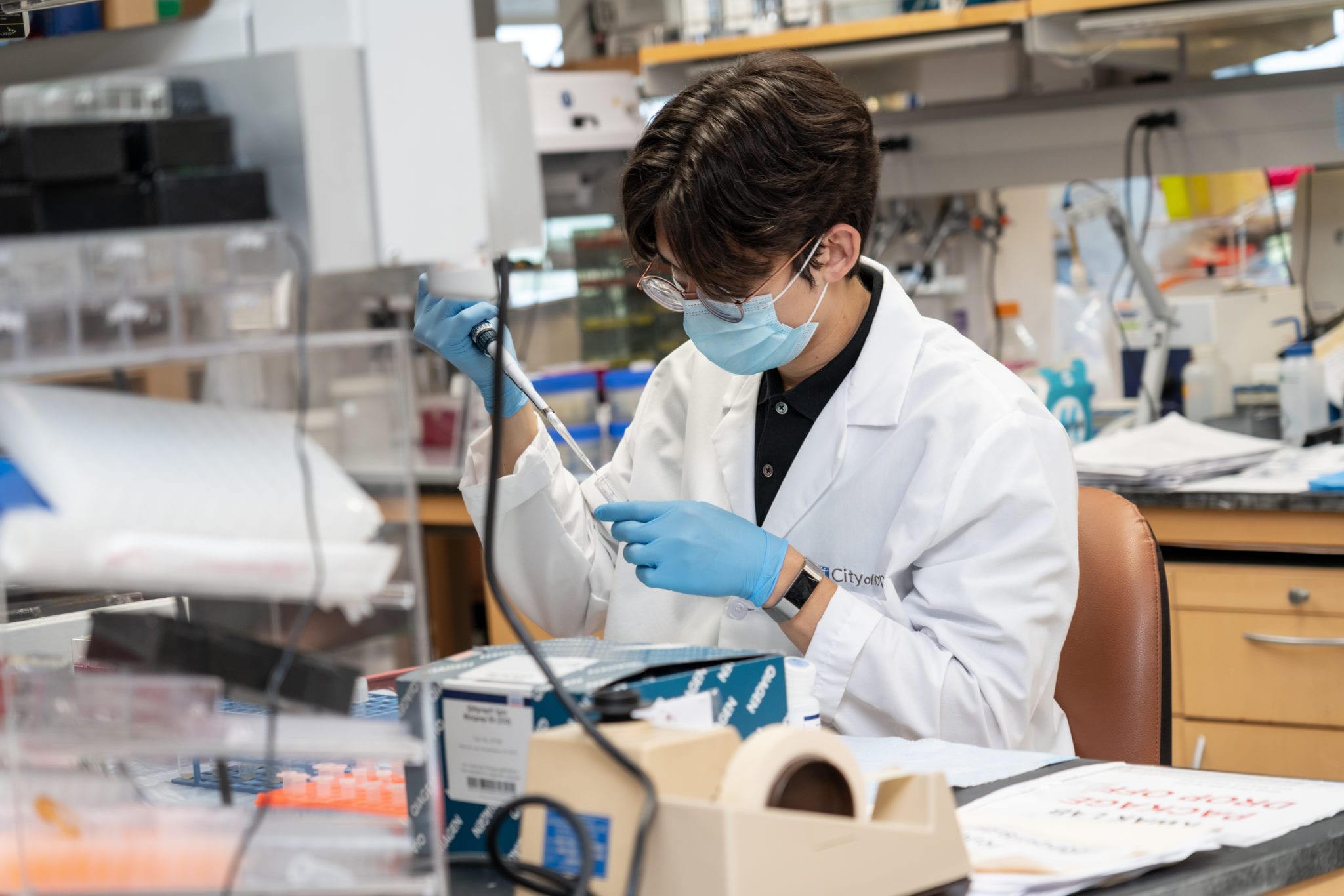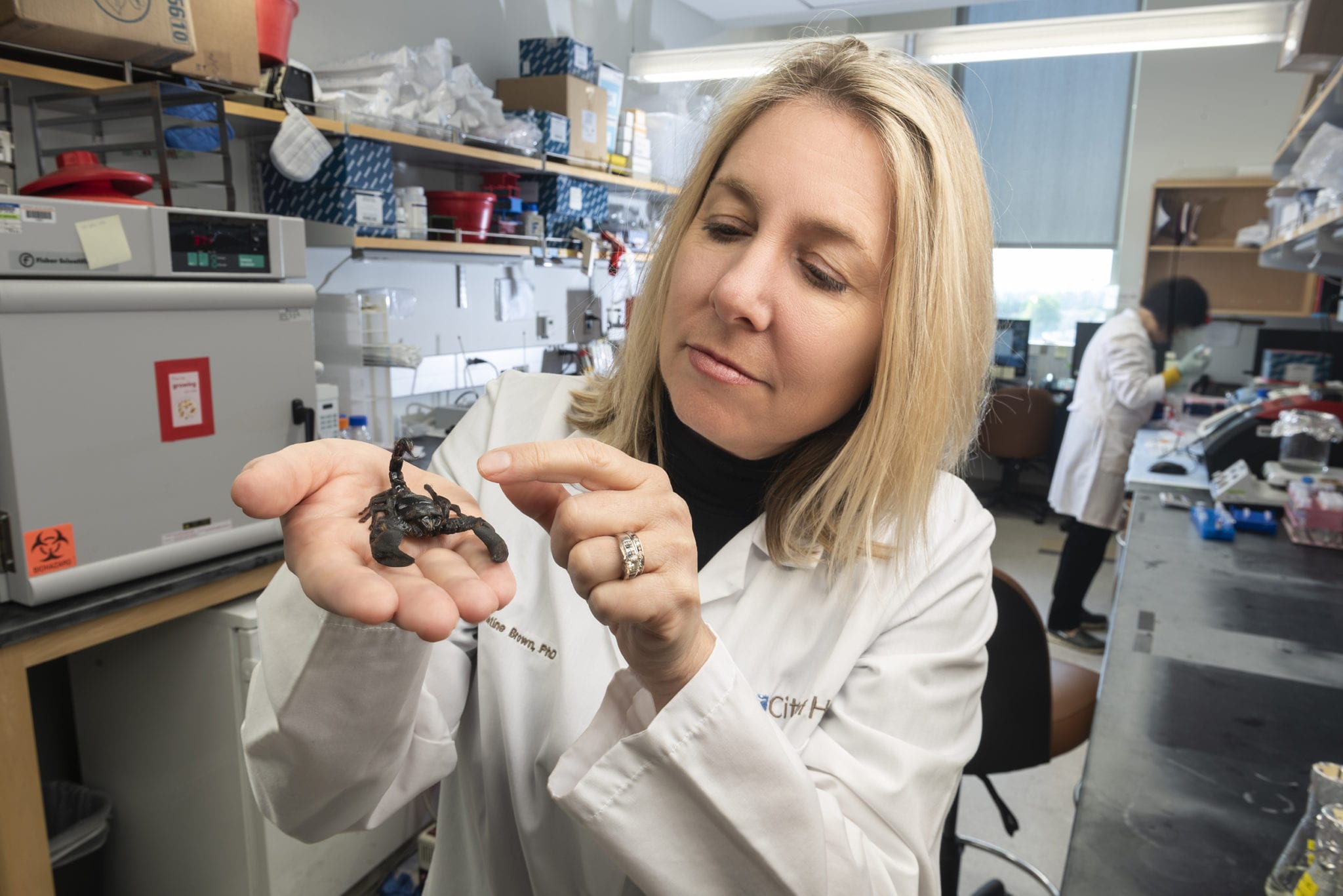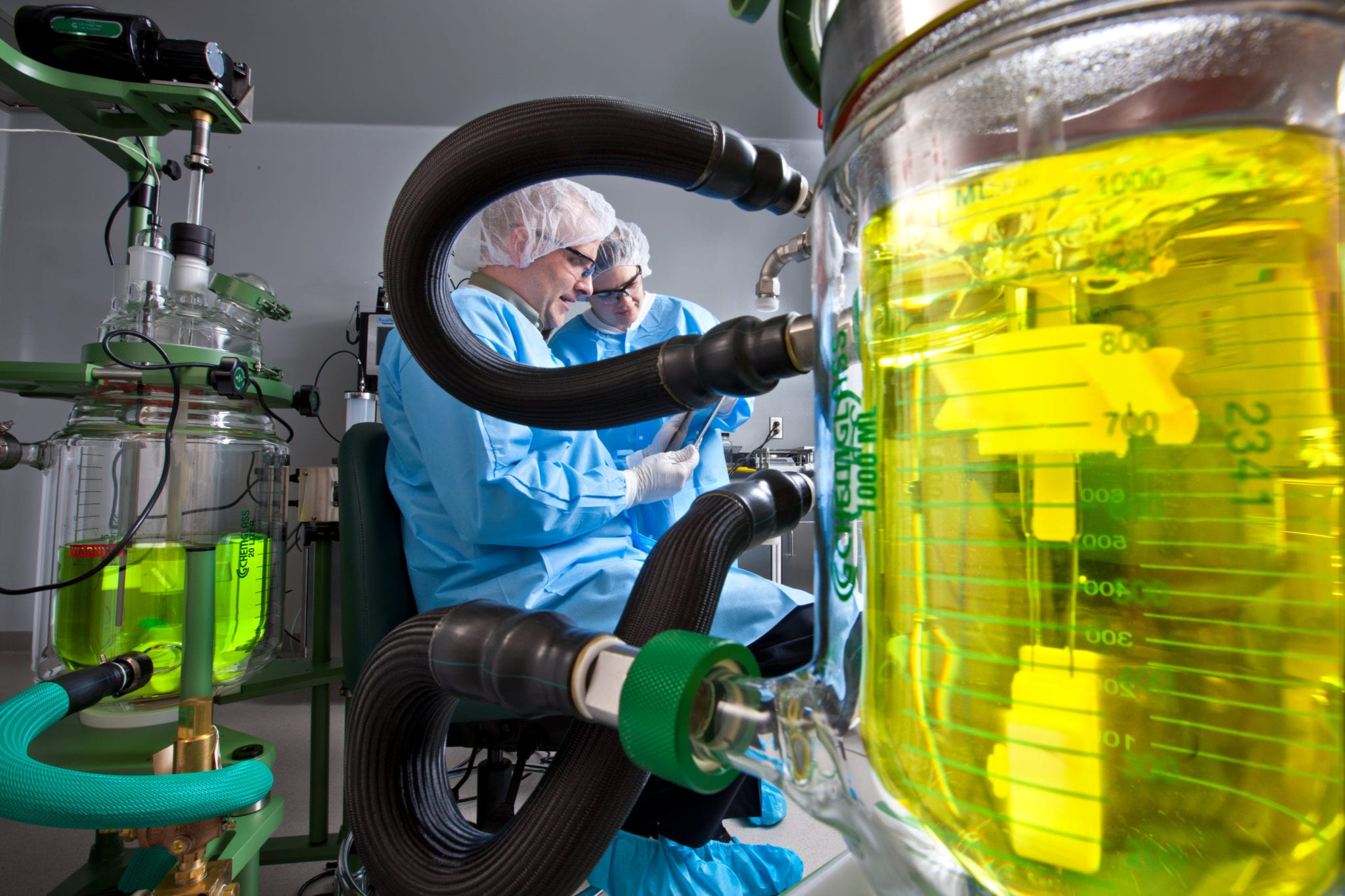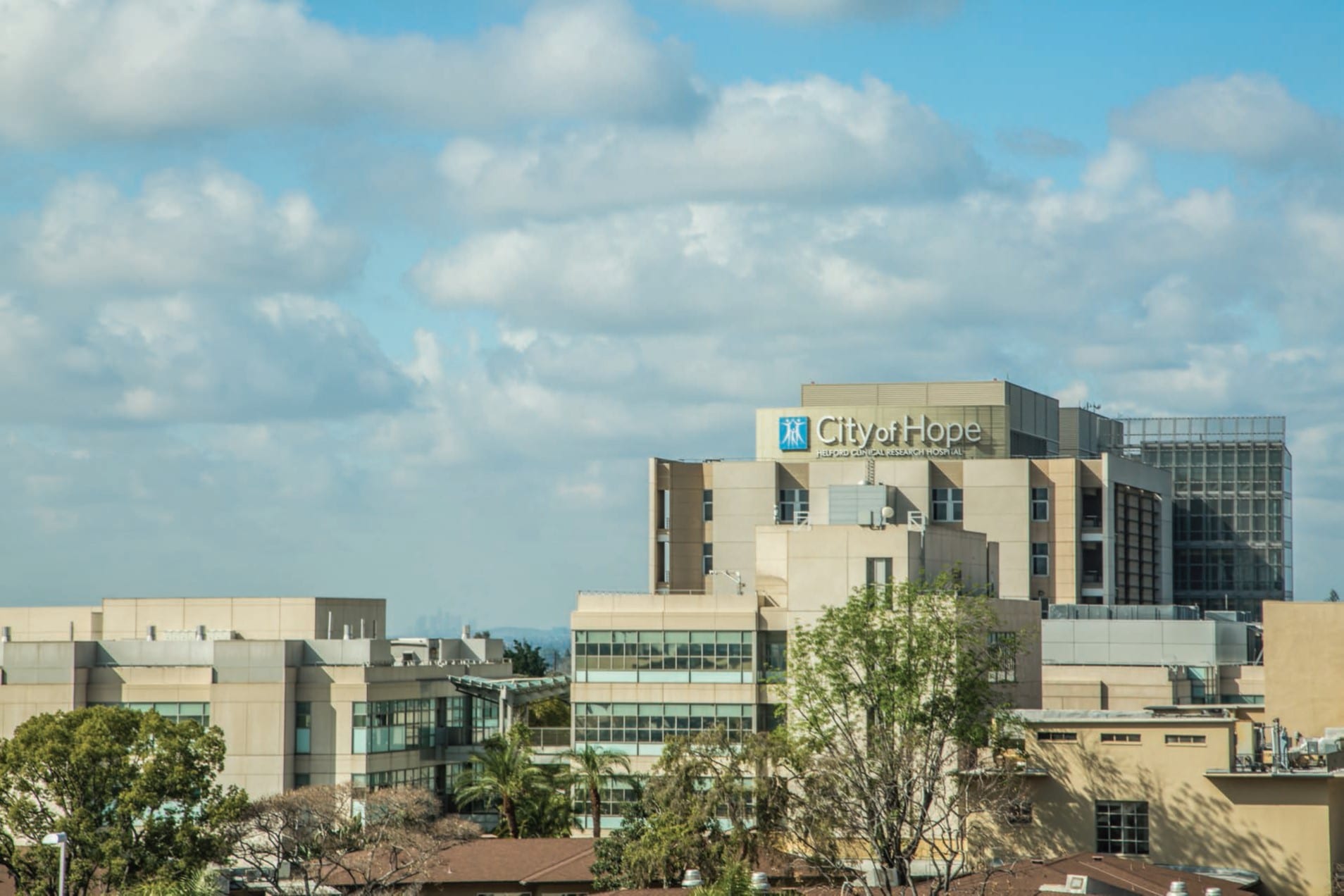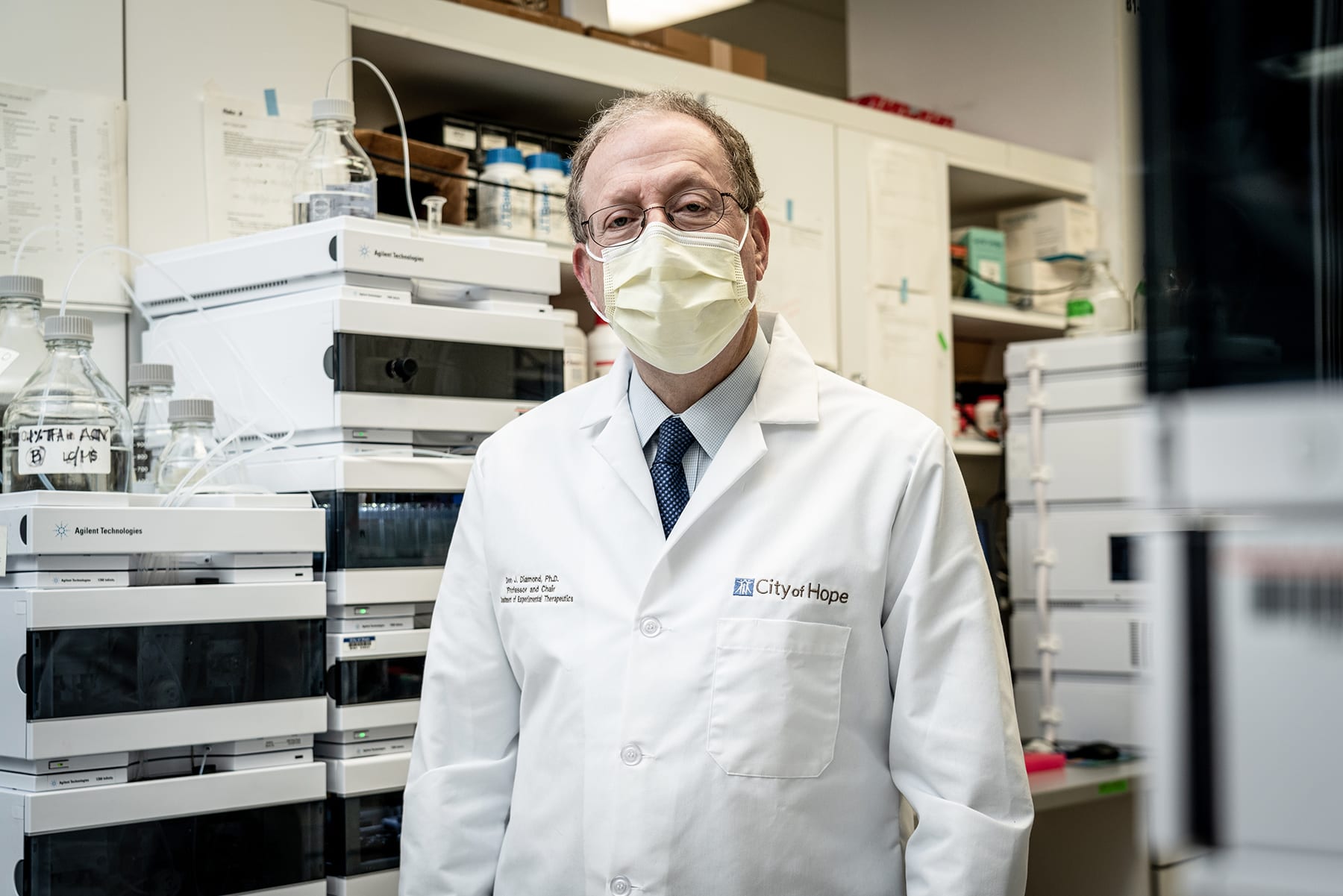
The Ingenuity Engine: Translational Research and the Need for Speed
Today, the world waits in desperate hope for a coronavirus vaccine. Meanwhile, people continue to contend with other serious diseases such as cancer and diabetes, which also require new research innovations. At City of Hope — a biomedical research complex and National Cancer Institute-designated comprehensive cancer center in Southern California — such innovations and patient care are continuing uninterrupted. In large part, this is due to the institution’s recognition that cancer and other urgent medical conditions don’t stop for COVID-19.
When the pandemic began to gain traction in the U.S. in February, some of our scientists, including virologist Don Diamond, Ph.D., pivoted their research to tackle SARS-CoV-2. Decades of keeping immunocompromised patients safe in our pioneering Hematopoietic Cell Transplantation Program, one of the largest of its kind in the U.S., has resulted in extensive expertise in fighting viral infections, and prepared us to take on the coronavirus.
A scientist conducts research at City of Hope. Supporting our investigators is a robust, campus-wide research-and-development enterprise that aims to speed innovations from the lab to patients.
Click on the image to see the full-sized version
Dr. Diamond’s team previously developed the Triplex vaccine for cytomegalovirus; this program has completed phase 2 trials with very promising results; the vaccine is currently the subject of multiple ongoing and planned studies. Using this as a starting point, the team set out to synthesize a new COVID-19 vaccine.
Supporting these investigators is a robust research-and-development enterprise, an overarching institution-spanning system that is tailor made to accelerate innovations from the lab to patients. This includes everything ranging from funding support to access to counsel from internal and external drug development specialists. Our R&D apparatus leverages the combination of a fundamental strength in basic science and the patient-care focus of our comprehensive cancer center. City of Hope blends the best of academics, medical care and biotech, a concept that we call the “R&D hybrid.”
Success requires a convergence of key components strategically aligned to break through bottlenecks, increase speed and meet patients’ needs.
Innovation
City of Hope’s groundbreaking translational research history includes developing the technology underlying synthetic human insulin, a breakthrough in diabetes management, and monoclonal antibodies, which are integral to widely used, lifesaving cancer drugs such as trastuzumab, rituximab and cetuximab. Building on that legacy, more than 1,000 researchers pursue a variety of creative approaches, with areas of excellence including the development of biologics, small-molecule drugs and cellular therapies. These efforts have generated more than 450 patent families, with many more on the horizon.
Creating a critical continuum to link the lab and the clinics can enable R&D programs to translate innovation into novel treatments. This has led to City of Hope operating more than 500 clinical trials this year, enrolling more than 6,200 patients.
One recent example draws upon 20-plus years of leadership in advancing CAR T cell therapy. In a March 2020 Science Translational Medicine paper, molecular biologist Christine Brown, Ph.D., The Heritage Provider Network Professor in Immunotherapy, and neuroscientist Michael Barish, Ph.D., reported promising lab results for an entirely new strategy for programming CAR T cells. The team augmented the T cell with a peptide sequence from chlorotoxin (CLTX), a component of scorpion venom that has an affinity for brain cancer cells.
Molecular biologist Christine Brown, Ph.D., pictured, and team have developed a process for creating CAR T cells using a component of scorpion venom called chlorotoxin (CLTX) that has an affinity for brain cancer cells. CLTX-CAR for glioblastoma was recently licensed to a biotech company.
Click on the image to see the full-sized version
CLTX-CAR for glioblastoma was recently licensed to a biotech company for further development, and first-in-human clinical trials of the treatment are underway.
More broadly, our researchers continue to advance 46 drugs covered by active INDs. Nineteen of these INDs are for CAR T cell therapies as well as the development of CAR natural killer (NK) cells, a group of innate immune cells, to treat glioblastoma and other cancers. Mustang Bio, Inc., has a broad collaboration with City of Hope that includes exclusive licenses to five clinical-stage CAR T programs.
Infrastructure
Having this infrastructure in place is critical to driving innovation. Three on-site GMP manufacturing facilities can produce any of the therapies that scientists can envision for use in clinical trials. And more than 20 core labs offer additional expertise and equipment that are essential to this translational continuum, from gene editing to structural biology to analytical pharmacology. With these capabilities close at hand, investigators are better equipped to advance their ideas with speed.
Researchers work in one of three on-site GMP manufacturing facilities, which can produce any type of therapy that our scientists can envision for use in clinical trials.
Click on the image to see the full-sized version
Beyond the traditional research capabilities, our scientists additionally benefit from expertise rarely seen in an academic setting: experienced drug development experts who work hand-in-hand with researchers, along with a regulatory affairs team that helps navigate the regulatory process.
Integration
Using the R&D hybrid model, researchers whose projects are evaluated using rigorous criteria may be offered the option to funnel their science into a milestone-driven drug development process designed to shorten the time between discoveries in the lab to the time when they can begin first-in-human clinical trials.
This approach to R&D can mean that an innovative discovery might be spun out into a startup company or licensed to an existing biopharmaceutical company. The ultimate goal is speeding new discoveries to patients by fast-tracking commercialization of potentially life-changing new therapies.
In June, a novel gene therapy for B-cell lymphoma, CpG-STAT3siRNA, developed by immunologists Hua Yu, Ph.D., Billy and Audrey L. Wilder Professor in Tumor Immunotherapy, and Marcin Kortylewski, Ph.D., was licensed to Scopus BioPharma. Because of this collaboration, this team is on track to launch a first-in-human trial early next year.
Investment
Early-stage projects and later-stage translational investigations often get a boost from internal funding for drug development, which is considerable in scale. As part of our R&D hybrid model, proposals are vetted with the help of experts who have been and are successful in venture capital, biotech and pharma, who also follow and advise on the project along its milestone-driven development path.
Philanthropy also can play a crucial role in driving this translational science. For example, research dedicated to the development of CpG-STAT3siRNA received funding through the Toni Stephenson Lymphoma Center at City of Hope. Grants from the Ben and Catherine Ivy Foundation and Gateway for Cancer Research helped further studies of CLTX-CAR and the Marcus Foundation supports CLTX-CAR clinical trials.
Hope as an Intention
Finally, there is an intangible that breathes life into these R&D efforts: an unwavering institutional commitment to turn science into practical benefit. City of Hope faculty, staff and supporters embrace that mission because we see moving research rapidly to help patients as an integral component of compassionate care. Across the institution, researchers are focused on developing drugs that receive Food and Drug Administration approval and reach the market to improve patient lives. In this way, City of Hope’s entrepreneurial spirit is an outgrowth of its humanitarian roots, which date back more than a century.
As for Dr. Diamond’s coronavirus vaccine work, initial lab data is showing promise. Because the vaccine will be manufactured in-house, it will be able to move to clinical trials later this year — turbo-charging a process that traditionally takes several years.
City of Hope was founded over a century ago with strong humanitarian roots. Speeding the best treatments to patients who need them now is the motivating force behind our research.
Click on the image to see the full-sized version
Whether it is cancer, diabetes or COVID-19, patients need solutions today. With time of the essence, this R&D ingenuity engine drives us toward our goals of hastening effective treatments and cures and transforming the future of patient care.
